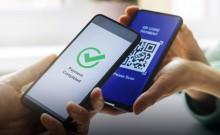Apple rolled out iOS 9.1 to all its iPhone, iPad and iPod Touch users on Wednesday, patching the iOS 9.0.2 jailbreak by Pangu. If you have already upgraded to the latest iOS software but wish to jailbreak your iPhone, there's only one way. Since the latest jailbreak is available for iOS 9.0.2, you must downgrade your iPhone to the older version.
In this article, we are going to walk you through the process of downgrading your iOS 9.1 iPhone/ iPad/ iPod Touch to iOS 9.0.2 so you can jailbreak your device.
Before we proceed, we would like to update you on the status of iOS 9.1 jailbreak. The renowned jailbreaking community, Pangu, worked extremely hard to get the iOS 9.0.2 jailbreak tool but Apple didn't take too long to patch it with the new software. Now, iPhone users who upgrade to iOS 9.1 will not be able to jailbreak their iPhones until a new tool is released.
Currently, there is no development on the iOS 9.1 jailbreak but we can expect the TaiG and Pangu teams to be working on a solution. So users will have to wait until these teams come up with new jailbreak software. Until then, it is advised to stay on the iOS 9.0.2 to enjoy the jailbreak status of your iPhone.
But if you have updated your iPhone or other iDevice to iOS 9.1 and wish to stay jailbroken, downgrade the software to iOS 9.0.2 immediately. The downgrade process will work only till Apple is signing the 9.0.2 firmware. Once the window closes, which can be anytime now, downgrading to the older version will not be possible.
In order to downgrade software from the current version on your iPhone, you must manually force the iOS 9.0.2 software to the device. Make sure you follow the guide correctly to avoid any midway trouble.
Disclaimer: This is a guide that assists you with the process of downgrading software on your iPhone. If not followed properly, there are chances the smartphone may get bricked or permanently irreparable. IBTimes India cannot be held responsible for any damage or claims from readers if the procedure does not yield the required results or if the smartphone is bricked. Hence, users are advised to proceed with caution.
Prerequisites:
- Download the correct iOS 9.0.2 IPSW file for your device. You can find the download links for all iPhone, iPad and IPod Touch models at the end of Redmond Pie's article.
- Make sure you have the latest version of iTunes (12.3.1) for Mac or Windows with support for iOS.
- Take a fresh backup of your data using iCloud or iTunes. Also note that backups taken on a higher version of iOS are not backwards compatible with older versions. You can manually save the essentials on your PC or individually sync using iCloud or iTunes.
How to downgrade iOS 9.1 to iOS 9.0.2?
Step 1: Turn off Passcode/Touch ID by navigating to Settings > Touch ID and Passcode and Turn Passcode Off
Step 2: Turn off Find My iPhone by navigating to Settings > iCloud > Find my iPhone and toggle the switch to off.
Step 3: Connect your iPhone/iPad/iPod Touch to your PC or Mac using a cable.
Step 4: Launch iTunes, click on the phone icon on top left and click Summary in the left pane.
Step 5: Hold down the Shift key on Windows PC or Option/Alt key on Mac and click on Restore iPhone.
Step 6: You will get a prompt to choose the IPSW file. That's when you navigate to the downloaded IPSW file and select.
By following these steps, you will initiate the downgrade process. Wait for the device to complete the procedure, which will likely take 10 to 15 minutes. After the downgrade is complete, your iOS device will automatically reboot into iOS 9.0.2. Once done, you can continue to jailbreak your device.
Credits: Redmond Pie








